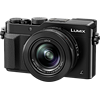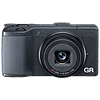Main
Model
Price
Advantages
launch
Announced
Body type
Camera subcategory
Sensor
Effective pixels
Max resolution
Sensor size
Sensor type
Processor
Image ratio w:h
Other resolutions
Sensor photo detectors
Image
ISO
Boosted ISO (minimum)
White balance presets
Custom white balance
Image stabilization
Uncompressed format
JPEG quality levels
Photography features
Minimum shutter speed
Maximum shutter speed
Maximum shutter speed (electronic)
Aperture priority
Shutter priority
Manual exposure mode
Subject / scene modes
Built-in flash
Flash range
External flash
Flash modes
Continuous drive
Self-timer
Metering modes
Exposure compensation
AE Bracketing
WB Bracketing
Screen / viewfinder
Articulated LCD
Screen size
Screen dots
Touch screen
Screen type
Live view
Viewfinder type
Viewfinder coverage
Viewfinder magnification
Viewfinder resolution
Videography features
Resolutions
File Format
Microphone
Speaker
Optics & Focus
Focal length (equiv.)
Optical zoom
Maximum aperture
Autofocus
Digital zoom
Manual focus
Normal focus range
Macro focus range
Number of focus points
Physical
Weight (inc. batteries)
Dimensions
Environmentally sealed
Battery
Battery details
Battery Life (CIPA)
Storage
Storage types
Storage included
Connectivity
USB
HDMI
Microphone port
Headphone port
Wireless
Wireless notes
Remote control
Other features
Orientation sensor
Timelapse recording
GPS
Samples
Videos
Summary
The Ricoh GR maximum resolution of 4928 x 3264 pixels (16 megapixels) is better in comparison with the Lumix DMC-LX100 maximum resolution of 4112 x 3088 pixels (13 megapixels). The Ricoh GR has bigger sensor than the Lumix DMC-LX100: APS-C (23.7 x 15.7 mm) versus Four Thirds (17.3 x 13 mm). It is very significant specification of this camera as big sensor allows you to make photos of the better quality. The Ricoh GR provides more presets of white balance - 9. It gives you more control over colour. The Lumix DMC-LX100 has more powerful 4X digital and 3x optical zooms.
The Ricoh GR screen is better as it offers more number of screen dots 1,230,000 in compare to 921,000 dots of the Lumix DMC-LX100 display. The higher dot count screen is better for reviewing pictures on your camera. The Ricoh GR provides better lowest (300 seconds) and fastest (1/4000 second) shutter speeds.
The Ricoh GR has built-in flash. The Panasonic Lumix DMC-LX100 has built-in Wi-Fi which will help the camera owner to transfer photos wirelessly from a camera to a laptop. The Lumix DMC-LX100 battery life is better than the Ricoh GR battery life. In accordance with CIPA standards you will be able to produce 300 shots with the Lumix DMC-LX100 and only 290 with the GR. The GR weighs 245g that is 148g less in comparison with the weight of the Panasonic Lumix DMC-LX100.
The Ricoh GR has 9 advantages and the Lumix DMC-LX100 only 8 so the GR becomes the best choice. Check the lowest price on Amazon.


